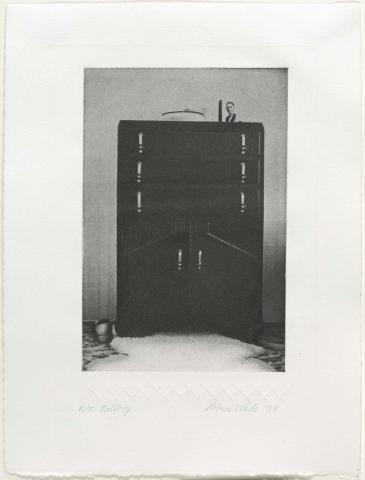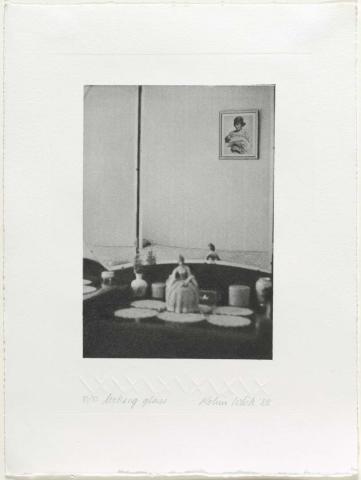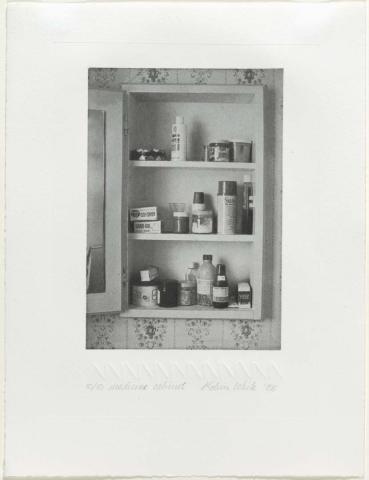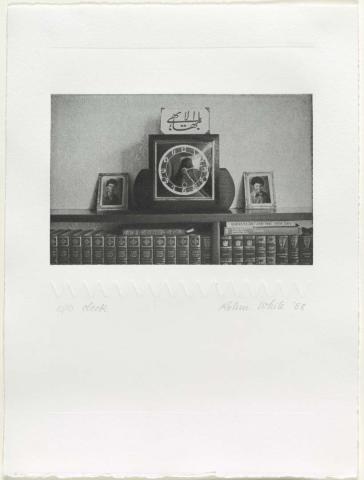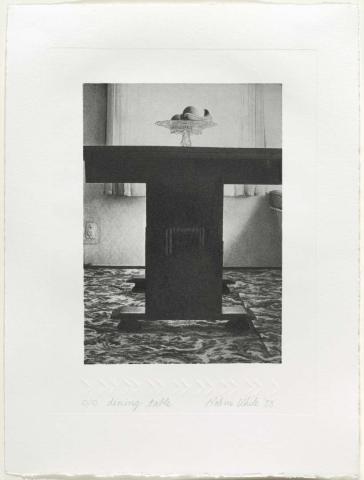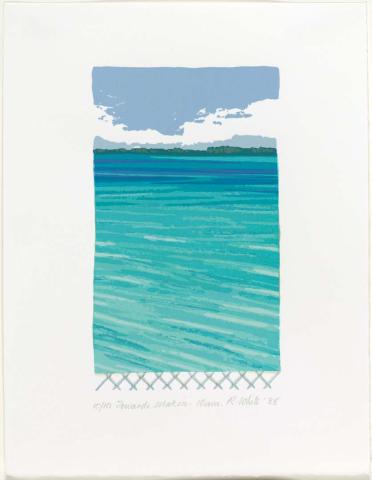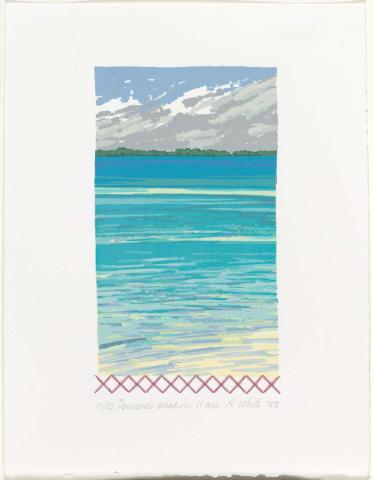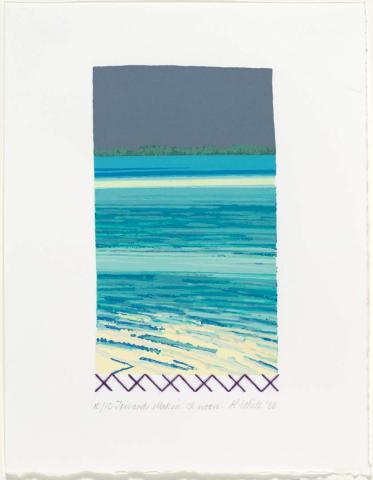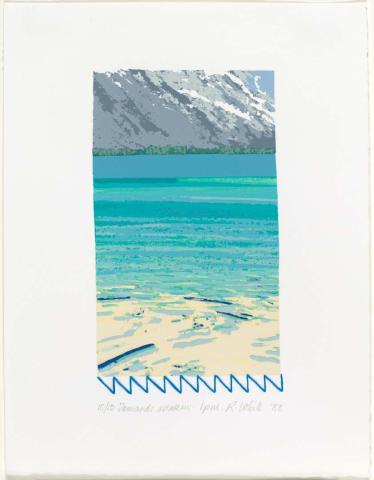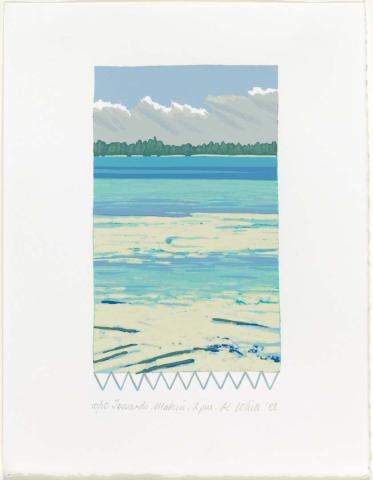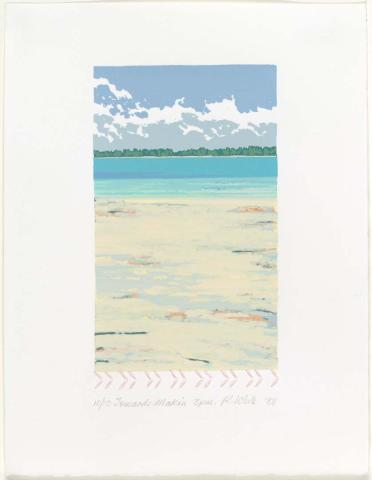Robin White
By Ruth McDougall
‘sis’ February 2024
Robin White is known for her bold, stylised paintings and prints of landscapes and people from across the Pacific; however, for the past 25 years, her practice has been defined by collaboration.
The 1988 print series ‘Saying goodbye to Florence’ explores the immense grief that White felt after the passing of her mother Florence. Taken from the photographs and drawings that White created in the days immediately following her mother’s death, the works titled Te Puke time to go capture traces of Florence in domestic objects from her home. In contrast, the screenprints titled Tarawa towards Makin look outward and record the view from White’s studio on Tarawa across the lagoon to Makin, the northernmost island of Kiribati. Each work depicts a moment during the six-hour passage of a receding tide ending at 3pm, the estimated time of Florence’s passing.
Prompted by the devastating loss of her Tarawa home and studio to fire, New Angel I–III 1998 is the first of White’s collaborative works. The series was created with a small group of I-Kiribati women from the Teitoiningaina Catholic Women’s Training Centre, and comprises 18 traditional weavings of 6 different objects. The work contains Christian references to fish and bread, sharing food and the Last Supper, and features depictions of the bold packaging of imported items sold in local Tarawa stores.
Created with her Fijian friend Leba Toki and Toki’s sister-in-law Bale Jione, Teitei vou (A new garden) 2009 reflects on the Bahá’í Faith’s precepts of collaboration and understanding within Fiji’s politically and socially troubled context. The artists use the format of the large masi (barkcloth) – usually on display in Fijian weddings – to suggest a union of difference, as indigenous Fijians and the descendants of the sugar industry’s Indian labourers struggle to coexist in present-day Fiji.
Connected objects

New Angel I-III 1998
- WHITE, Robin - Designer
- TEITOININGAINA CATHOLIC WOMEN'S TRAINING CENTRE - Weavers
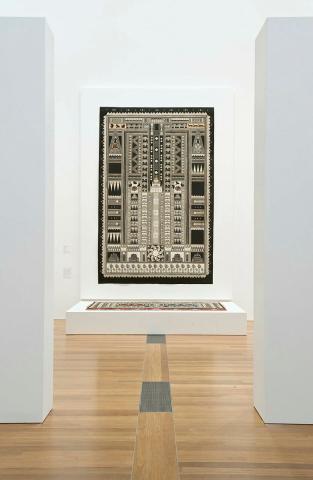
Teitei vou (A new garden) 2009
- WHITE, Robin - Artist
- TOKI, Leba - Artist
- JIONE, Bale - Artist
Related artists
Metadata, copyright and sharing information
About this story
- Subject
